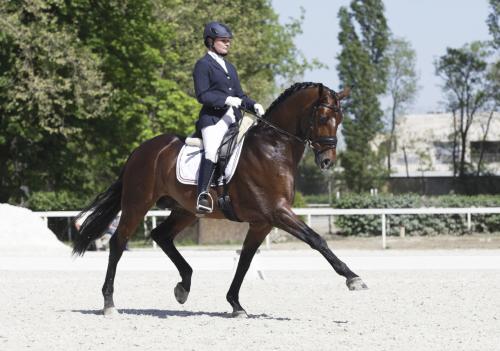It All Hinges On The Joints

Equine athletic potential and subsequent performance, success, and longevity hinge on healthy joints. Joints are essentially where two or more bones meet, yet they allow the body to perform complicated functions. Some allow for movement, influencing range of motion, stride length and overall comfort.
There are three different types of joints:
- Cartilaginous joints are those in which the bones are connected by cartilage, a firm but flexible tissue made up of specialized cells called chondrocytes. They permit a limited amount of movement and include pelvic joints and joints in the vertebral column.
- Fibrous joints do not move and there are comparably few of them in the body. Examples include the places where the bones of the skull come together.
- Synovial joints enable the most movement, transfer weight (load) between bones, and are the most common joints in a horse’s body. They are filled with fluid encased in a membrane and surrounded by a joint capsule. They include ball and socket joints, hinge joints, and gliding joints. Examples of synovial joints are hocks and stifles.

Since synovial joints are the most common and allow for the most movement, they are the primary type for consideration when it comes to joint health. A synovial joint can be thought of as an organ, made up of different types of tissues. Articular cartilage is present at the ends of the bones, cushioning them and acting to distribute loads and minimize friction during movement. It is composed of an organized arrangement of collagen, water, and proteoglycans (chains of sugar units called glycosaminoglycans (GAGs)). Soft tissues, such as tendons and ligaments, stabilize the joint’s range of motion.
Cartilage is not well-equipped to heal itself, so it is important to think about preservation beginning at an early age to maximize soundness and performance longevity. Unfortunately, all it takes for cartilage to begin to degrade is an excessive amount of inflammation, which is often brought on by repetitive “wear and tear”. Since the articular cartilage does not have its own natural blood or nerve supplies, evidence of joint injury is not immediately apparent, therefore joint problems are not always obvious when they start. Joint disease and injury, especially in performance horses, commonly lead to expensive, often time-consuming diagnostics, treatments and therapies, loss of training time, decreased performance, and even loss of use of the horse.
Osteoarthritis (OA), formerly known as degenerative joint disease, is the most common joint problem in horses, accounting for more than 60% of equine lameness. The term “arthritis” refers to joint inflammation, and there are many types and causes in horses. Osteoarthritis can occur in any synovial joint. It is a degeneration of the cartilage that can be precipitated by factors including repetitive trauma, historical fractures or other injuries, and/or poor conformation that can increase stress on joints. High-speed training is also a risk factor. Osteoarthritis gets progressively worse with age, but can affect horses of any age and breed, with males and females equally affected.
A variety of treatment options are available, but there is no single standard treatment or known cure for OA. Since there are so many factors involved, the prognosis for affected horses is extremely variable depending on the severity of the disease, single or multiple joint involvement, whether high or low motion joints are involved, historical and intended horse use (see table), as well as clinical signs of OA and how long they have been present.

The physiological processes related to joint disease are extremely complex, making treatment challenging. The multifactorial nature of the disease complicates research, and many aspects remain elusive, even in humans, where it has been more extensively studied.
Ideally, joint health should be prioritized early to avoid or minimize joint injury and disease. Management considerations, including specialized trimming and shoeing, nutrition, and appropriate exercise programs are important elements in the equation.
